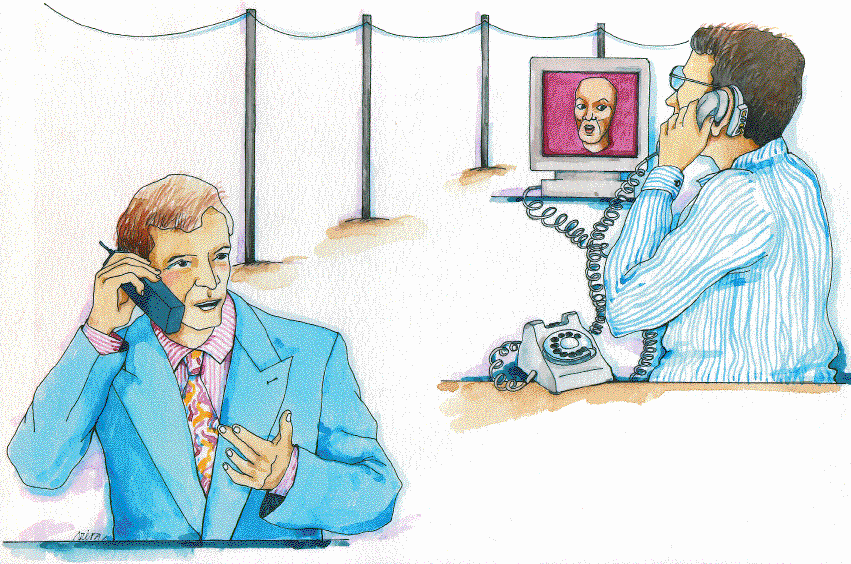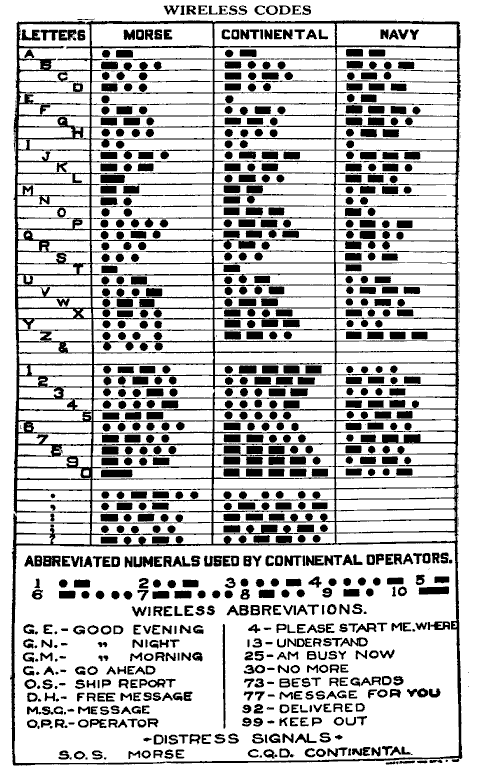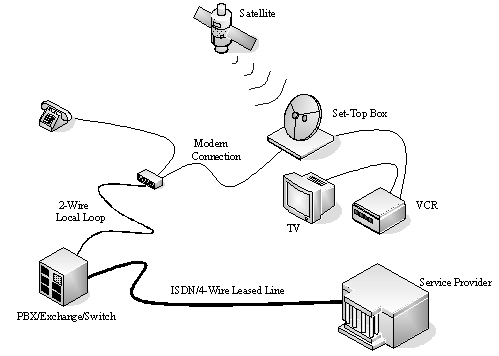A complete Guide to Telecommmunication
Basics of Telecommunication
The word "Telecommunications" is nothing but a term which defines devices and systems which is used to transmit electronic or optical signals across long distances.It is only because of this telecommunication, people around this world are able to contact one another,and they are able to access the information at an instant,and they are also able to communicate from remote areas.

The process of telecommunications usually involves a sender, who transmits the information and one or more recipients, and both of them are linked by a technology.Usually this technology which is used to connect the sender and a receiver includes a telephone system,for example,which transmits the required information from one place to another.
This process of transferring message is not only confined to a very small are but telecommunications enables people to send and receive personal messages across town, between countries, and to and from outer space. It also provides the key medium for delivering the news, datas, information, and also for entertainment purpose,such as broadcasting live sports programmes.
Usually the telecommunications devices convert different types of information, such as sound and video, into electronic or optical signals.The reason why we use electronic signals for transmission is that it typically travel along a medium such as copper wire or are carried over the air as radio waves.

Apart from this, Optical signals are specially used at present as they typically travel along a medium such as strands of glass fibers or optical fibers.Normally when a signal reaches its destination, there will be a device on the receiving end, and this converts the signal back into an understandable message, such as sound over a telephone(where electrical is converted into sound), moving images on a television, or words and pictures on a computer screen.
For the transmission of the telecommunication message, there are a variety of ways used.The number of ways of sending a message and it also depends on number of sender and receiver,for example
1)One sender to a single receiver - point-to-point
2)One sender to many receivers - point-to-multi point

In the case of the personal communications, such as a telephone conversation between two people or a facsimile (fax) message (see Facsimile Transmission),point-to-point type of transmission is used transmission.

For broadcasting purposes we generally use Point-to-multi point telecommunications, and this type provides the basis for commercial radio and television programming
Creating and Receiving a signal
The process of telecommunication, begin with messages which are usually converted into one of the two forms, namely electronic or optical signals.Some of the analog signals voice or music,(which are are created in an analog or wave format), must be converted into a digital form and the reason why these conversion takes place is that, for the faster and more efficient transmission and also for transmitting over a long distance.
The signals are then sent over a medium to a receiver, where they are decoded back into a form that the person receiving the message can understand.Usually there are a number of ways to create and decode signals, and many different ways to transmit signals.In this section let us discuss in detail about how to create and receive a signal.
Basic method:
When we consider devices like telephone and telegraph, these devices relay messages by creating modulated electrical impulses, or impulses which usually change in a systematic way.After this,these impulses are then sent along wires, through the air as radio waves, or via other media to a receiver, and the receiver then take cares of demodulating the modulated signals.Now let us discuss in detail how the signals are created and received in different devices
Telegraph:
The earliest method of delivering telecommunications,is the telegraph system, and this system works by converting the contacts (connections between two conductors which permits a flow of current) between a telegraph key and a metal conductor into the electrical impulses.The image below shows the old telegraph instrument used

After that, these impulses are sent along a wire to a receiver,so as to complete the communication process,where at the receiving end, the impulses are converted into short and long bursts of sound or even into dots and dashes which are imprinted on a simple printing device. Specific sequences of dots and dashes represent letters of the alphabet.Different types of codes such as Morse, Continental and Navy codes are explained below

But during the early days of the telegraph,telegraph operators are usually used to decode these sequences.By this way the telegraph operators are able to transmit and receive letters that spelled words.As years proceed the tater versions of the telegraph were designed in such a way so that they could decipher the letters and numbers automatically, without any manual work.At present in the 21st century, the use of telegraphs are reduced to a larger extent and now telegraphs are largely replaced by other forms of telecommunications,mainly by electronic mail (e-mail).In spite of it slow use in this era, they are still used in some parts of the world to send messages.
Telephone:
The next technology which followed the telegraph system is the telephone.Usually in the case of telephone, we uses a diaphragm (small membrane) which is connected to a magnet and a wire coil, so as to convert sound into an analog or electrical waveform representation of the sound.
Thats why, when a person speaks into the telephone’s microphone,the sound waves which was created by the person's voice, will vibrate the diaphragm, and this in turn creates electrical impulses(digital form) which are sent along a telephone wire, which is a medium.The logic behind the working of telephone is explained below

At the receiver side,the receiver’s wire is usually connected to a speaker,and they convert the modulated electrical impulses back into sound, and this makes the person at the receiver end to able to hear the voice of the speaker at the transmitter end
Cellular radio phones:
Devices which use radio waves for creating a signal includes broadcast radio and cellular radio telephones, where they create signals by modulating radio waves. A radio wave is nothing but a type of electromagnetic radiation,where a form of energy that travels in the form of waves.
Microwaves are also electromagnetic waves, but with a shorter wavelengths and at a higher frequencies.Usually in this type of telecommunications, a transmitter creates and emits radio waves.These transmitters, electronically modulates or encodes sound or other types information onto the radio waves by either

1)Varying the amplitude (height) of the radio waves, or
2)By varying the frequency (number) of the waves within an established range.
At the receiver side,the receiver is tuned accordingly to a specific frequency or range of frequencies which will pick up the modulation which was added to the radio waves and a speaker which is usually connected to the tuner,take care of converting the modulation back into sound form so that it becomes an understandable message for the receiver.
Television Broadcasting:
The broadcasting of the television also works in the similar fashion, as described above.Here a television camera takes the light reflected from a scene and they convert them into an electronic signal,and this is transmitted over high-frequency radio waves.

A television also contains a tuner, that receives the signal and uses that signal to modulate the images seen on the picture tube. The picture tube usually consists of an electron gun which shoots the electrons onto a photo-sensitive display screen. These electrons will illuminate the screen wherever they fall, and thus moving pictures are created on the screen.However the image below explains the transmission via satellite
Digital transmission:
Usually the type of transmission that we have discussed in telegraphs, telephones, radio, and television is analog transmission where they work by modifying electronic signals, making the signals imitate, or reproduce, the original message.

But in the case of computers and other electronic equipments, they transmit digital information.In the case of these Digital technologies, first they convert a message into an electronic or optical form and they do this process by measuring different qualities of the message,which includes the pitch and volume of a voice, many times.
After that these measurements are then encoded into multiple series of binary numbers,i.e in the form of 1s and 0s and finally, they send impulses which corresponds to the series of 1s and 0s.
The reason why we go for digital information is that they can be transmitted faster and it is more than analog signals, because the impulses only need to correspond to two digits(0's and 1's) and not to the full range of qualities that compose the original message, such as the pitch and volume of a human voice,as in the case of analog transmission.
These digital transmissions can be sent over wires, cables or radio waves,and most importantly, they must be decoded by a digital receiver.There has been a constant updation in the case of digital technologies and newer digital telephones and televisions are being developed to make telecommunications more efficient.
Usually the personal computers tend to communicate with each other or with a larger network such as the Internet, by simply using an ordinary telephone network.At present,increasing numbers of computers rely on broadband networks, which are provided by telephone and cable television companies to send text, music, and video over the Internet at a very high speed.
As the telephone network functions, by converting sound into electronic signals, the computer must convert its digital data into sound form and to do this Computer Use a device called a modem, which is short for modulator/demodulator.The image of a modem is shown below

The function of the a modem is that, it converts the stream of 1s and 0s from a computer into an analog signal so that it can be transmitted over the telephone network, as a speaker’s voice would do.At the receiving end the modem of the receiving computer is set to demodulate the analog sound signal again into a digital which the computer can understand and process.The working of a modem is explained below.
Tranmission Medium
Introduction:
In this section let us discuss about, how we are able to transmit the signal between the sender and receiver with the help of different transmission medium.Usually a telecommunications system, delivers the message, using different kinds of transmission media.These different types of transmission media includes
1)Copper wires
2)Fiber-optic cables
3)Communication satellites
4)Microwave radio.
Usually to categorize any telecommunications media we consider whether the media uses wire or not.In the case of Wire-based telecommunication, the initial link is provide between most telephones and the telephone network prior to the transmission and usually this wired media is considered as a reliable means for transmitting messages.These are also called as wire line media.
Telecommunications without wires,are known as wireless communications,and the devices which use these technologies includes
1)Cordless telephones
2)Cellular radio telephones
3)Pagers
4)Satellites.
The mainreason why we use wireless communications is that they offer increased mobility and flexibility and some specialists belive that in the future the wireless devices will also offer high-speed Internet access.The different type of transmission medium used are explained below
i)Wires and Cables:
The original and most dependable medium of communication is wires and cables and they still they remain as the primary means for telephone connections.
These kind of wire line (i.e wired) have evolved from telegraph to telephone service and in spite of all the advancements, this continues to provide the majority of telecommunications services all over the world. These Wires are used to connect telephones together not only within a home or office but they are also used to connect these telephones to the nearest telephone switching facility.
Apart from these other type of wire line services employ usually coaxial cable, which is used mainly by cable television and it provide hundreds of video channels to subscribers.Most of these content which are transmitted by these coaxial cable of cable television systems is usually sent by a satellite to a central location, which known as the headend.
Coaxial cables flow from the headend throughout a community and then to individual residences and reach individual television sets in the residents.The coaxial cable network includes amplifiers that process and retransmit the television signals,because the signals get weaken as distance from the headend increases.
ii)Fiber-Optic Cables:
Fiber-optic cables use nothing but specially treated glass which can transmit signals in the form of pulsed beams of laser light. These cables carry many times more information than that of copper wires can,the main advantage of this is that it can transmit several television channels or thousands of telephone conversations at the same time.
For most transoceanic routes,this fiber-optic technology has replaced copper wires and also in areas where the requirement pf large amounts of data is to be sent.This type technology uses laser transmitters at the transmitter side to send pulses of light via hair-thin strands of specially prepared glass fibers.
At present new improvements has promised that the cables can transmit millions of telephone calls over a single fiber and it is more efficient.These fiber optic cables provide the high capacity,and these forms the backbone links whenever it is necessary to carry the enormous and growing volume of telecommunications and Internet traffic.
iii)Radio Waves:
In the case of the wireless telecommunications, they use radio waves,which are sent through space from one antenna to another,and this forms the medium for communication. These radio waves are mainly used for receiving AM and FM radio and for receiving television.Apart from these, devices such as cordless telephones and wireless radio telephone services,like cellular radio telephones and pagers, also use radio waves.

Usually the telephone companies use microwaves, to send signals over a very long distances.These microwaves use higher frequencies than that of the radio waves, which was used for AM, FM, or cellular telephone transmissions, and these microwaves are used generally when they are required to transmit larger amounts of data and in an efficient manner.
The important characteristics of the microwaves is that it is(its characteristics) similar to those of visible light waves and they transmit pencil like thin beams, which can be received using dish-shaped antennas at the receiver end.These narrow beams, can be focused to a particular destination and it provides a reliable transmissions over short distances on Earth.Usually the higher frequencies are easily able penetrate the ionosphere and they can provide a high-quality signal.
iv)Communications satellites
For the telecommunications to take place all over the globe, communications satellites will provides the necessary requirement for the process of transmitting the signals and this process takes place without any need of a network of wires and cables.
These satellites will orbit the Earth, at a particular speed that enables them to stay above the same place on Earth at all times.These type of orbit is known as the geostationary or geosynchronous orbit where the orbital speed of satellite is in synchronous with that of the Earth’s rotation.Usually these kind of satellites will receive transmissions from Earth and they transmit them back to numerous Earth station receivers which are scattered but within the receiving coverage area of the satellite.
This type of relay function makes it possible for satellites to operate as “bent pipes”, i.e., wireless transfer stations for point-to-point and point-to-multipoint transmissions.These satellites are also used by telephone and television companies to transmit signals across greater distances.This is very useful for Ship, airplane, and land navigators as they receive signals from the satellites so as to determine their geographic positions.The use of satellite, for different applications like dish TV,etc., can be explained from the image below

Like it on Facebook, Tweet it or share this article on other bookmarking websites.


